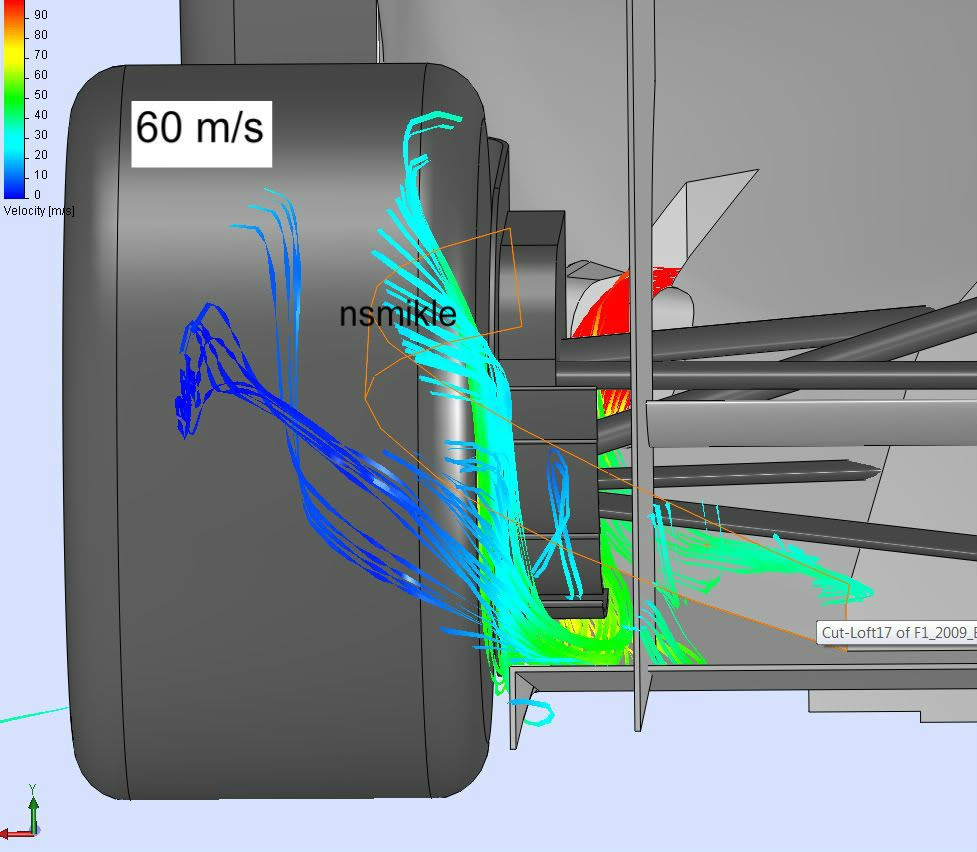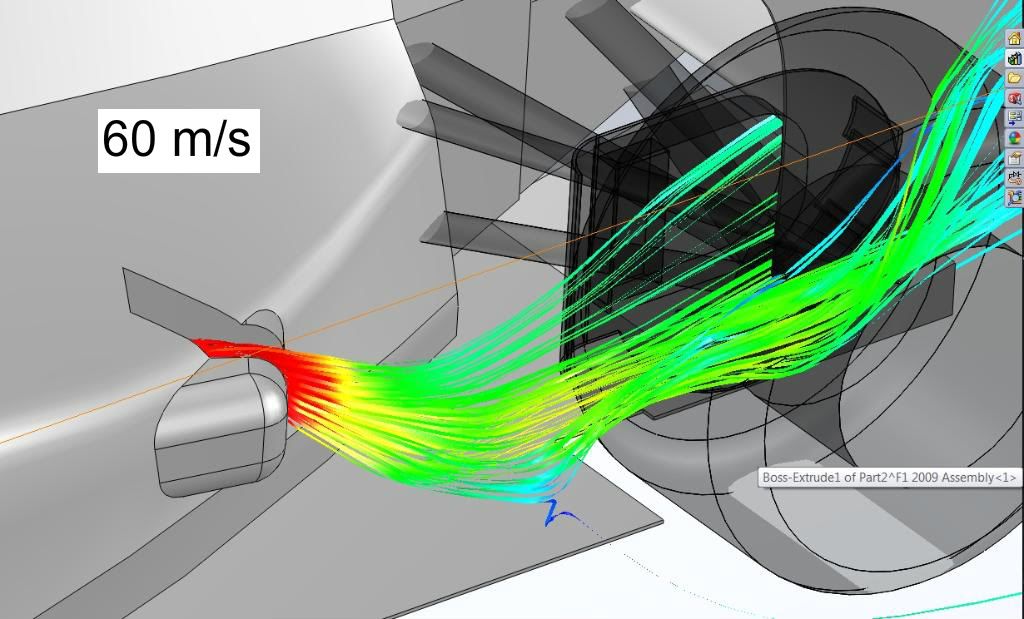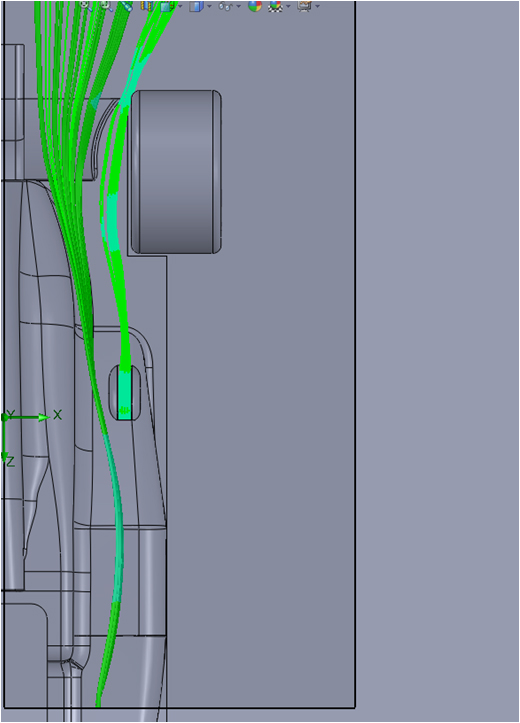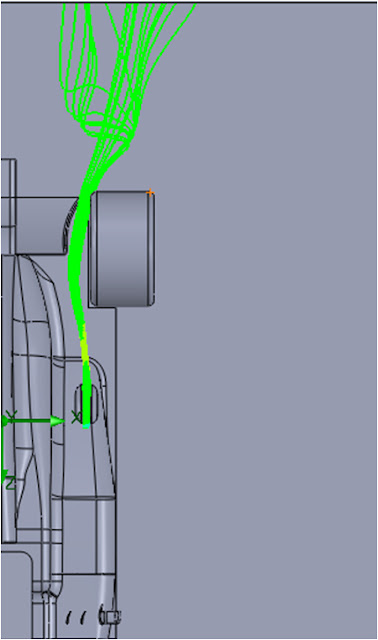I removed the drive shafts, suspension wishbones and pullrod, to keep the test as simple as possible. I did not include a rear wing to reduce the time needed for the test to be carried out. In general, I tried to keep things as simple as possible.
I used a road speed of 55 m/s (200 km/h, 124 mph) and the exhaust speed out of the pipe is at 350 m/s and 850 degrees Celsius.
These are my results:
I obviously didn’t manage to get the exhaust plume to bend down to the diffuser in my first iteration of the McLaren style sidepods (1st Picture), but it is definitely possible. This indicates that using this solution it is harder to get the exhaust plume flowing exactly where you want it as opposed to the Red Bull – Sauber style sidepods which I got almost right on the first try (2nd Picture).
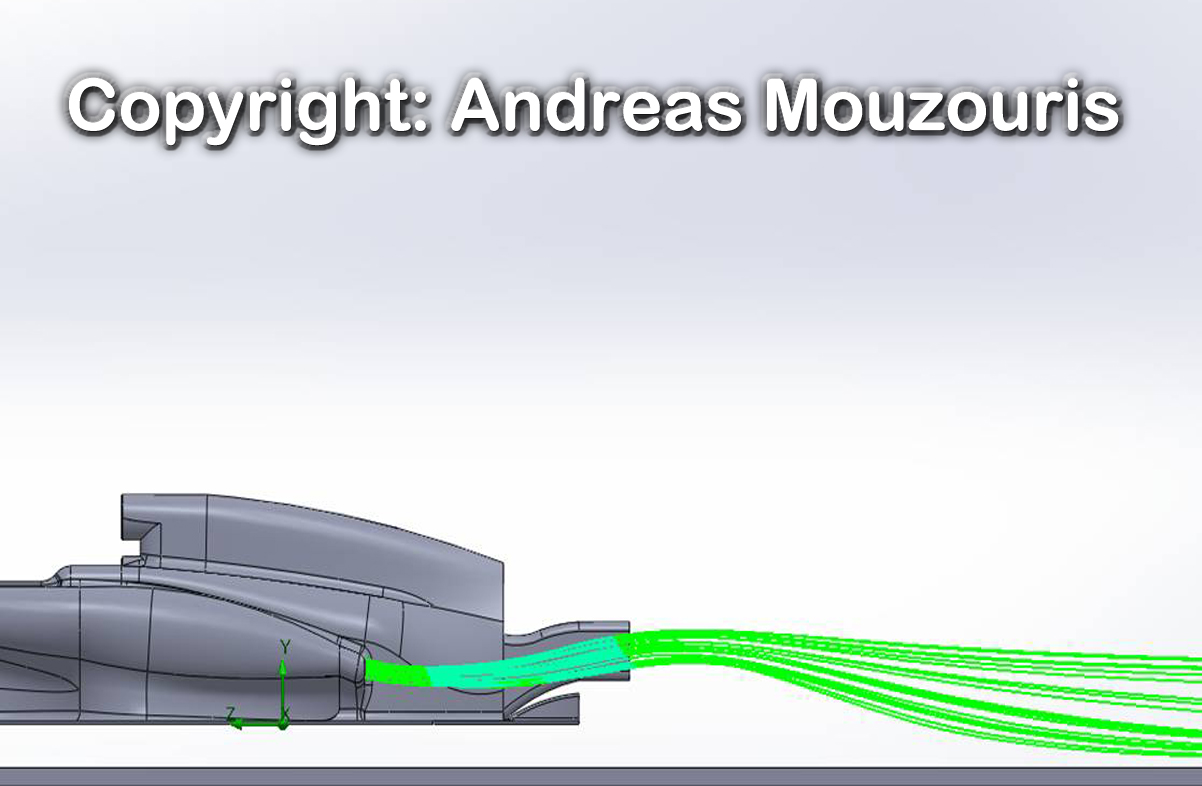
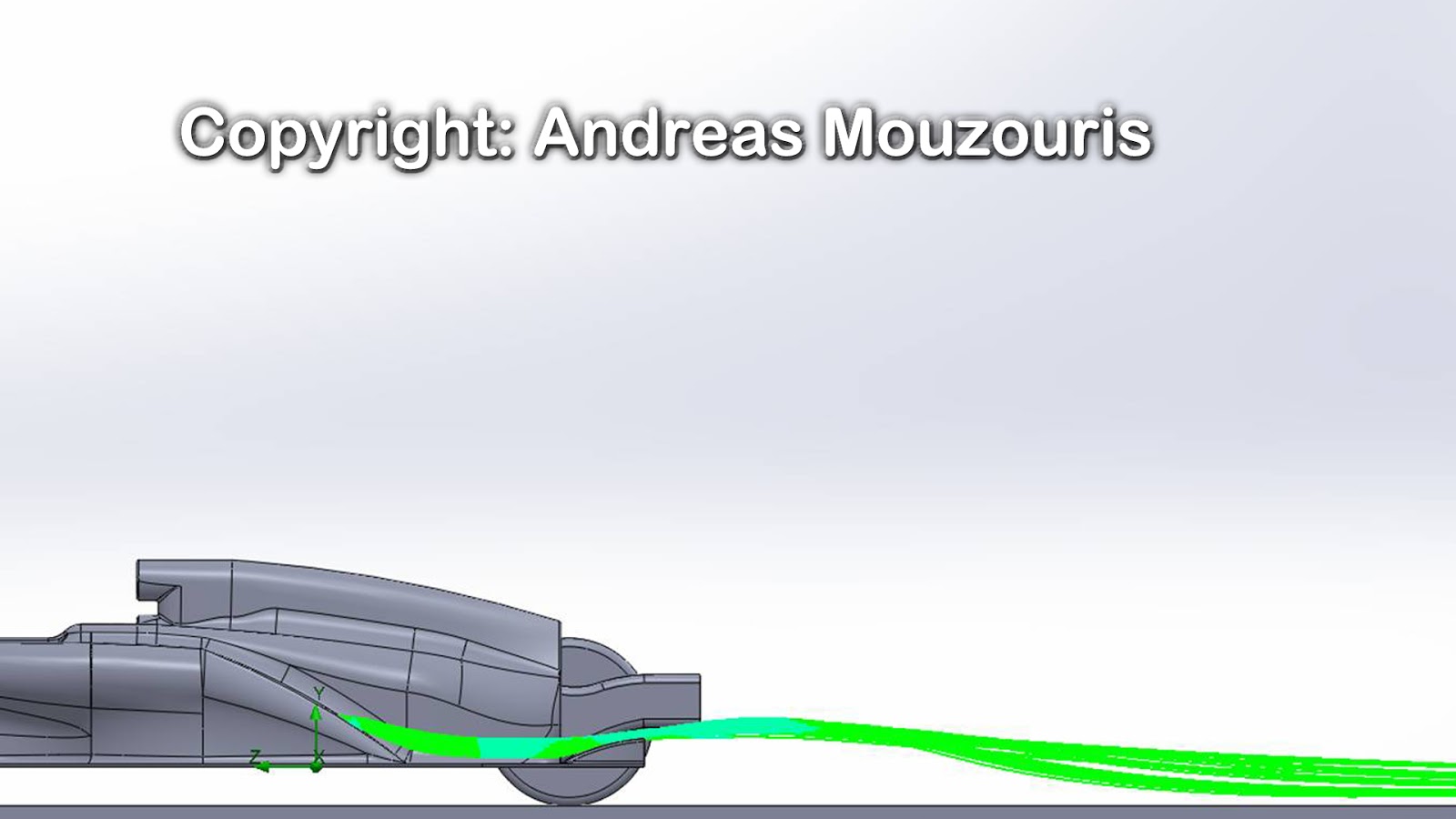
It is believed that using the Red Bull ramp it is easier to get the plume where you want as it is continuously following bodywork to reach the diffuser. My results support this belief, and show a more consistent and predictable flow, which will in turn produce more consistent downforce.
I believe that more teams will follow the trend set by Red Bull and Sauber in 2012 as it is, as I believe, the better solution.
Here are some more shots of the CFD test:
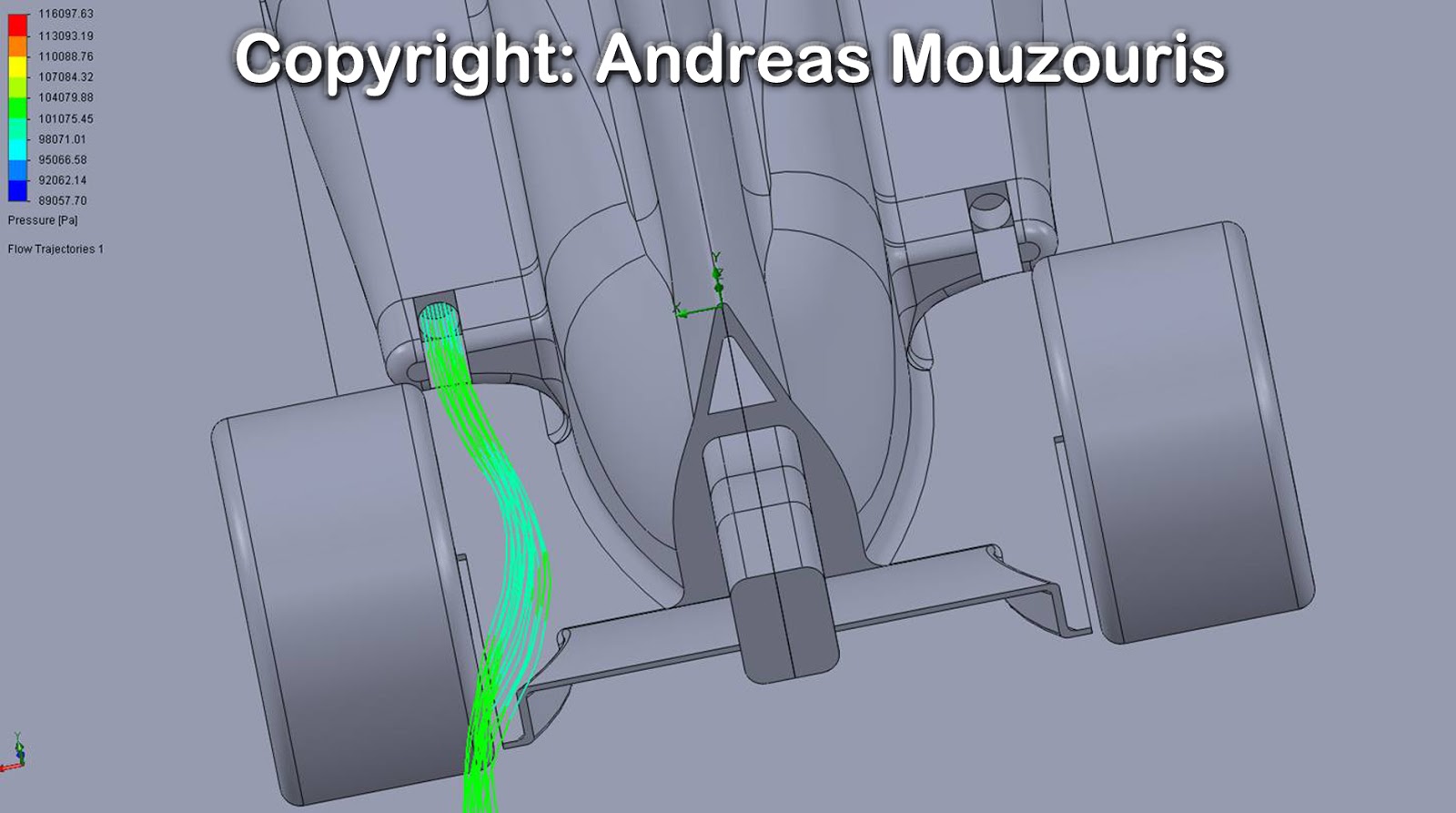
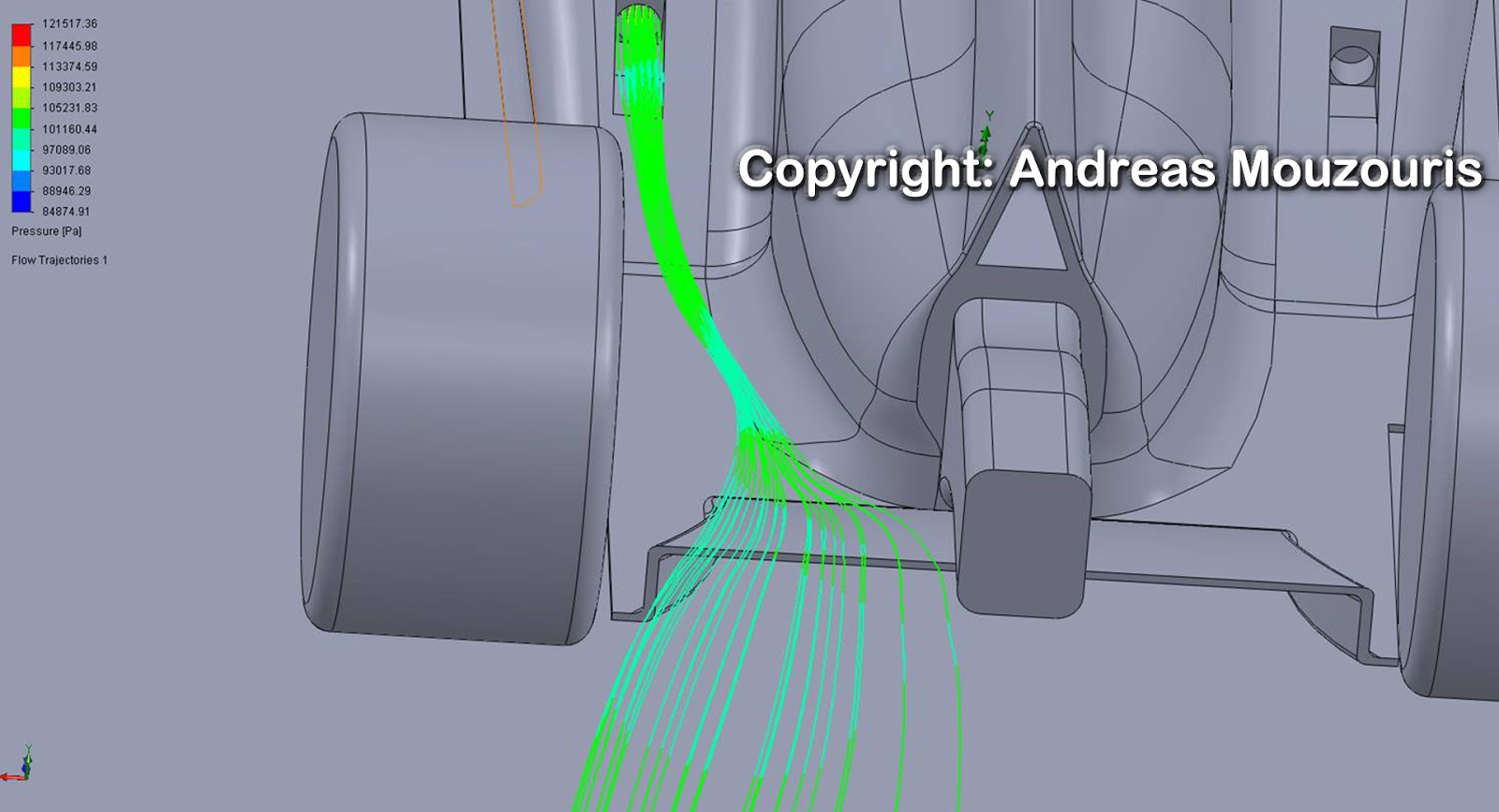

http://technicalf1explained.blogspot.co ... g-cfd.html
PS: Where the left wheel is not visible it is just hidden, it was included in the test.



